GCSE Inhertiance, variation and evolution
1/91
There's no tags or description
Looks like no tags are added yet.
Name | Mastery | Learn | Test | Matching | Spaced |
|---|
No study sessions yet.
92 Terms
What are the two types of cell division?
Mitosis and Meiosis
What is mitosis?
It is used in asexual reproduction and results in the formation of two genetically identical daughter cells.
What is meiosis?
It is used in sexual reproduction and results in the formation of four genetically non-identical daughter cells.
What is the process of sexual reproduction
The process of reproduction where the nuclei of two gametes (sex cells) fuse to form a zygote (a process known as fertilisation), producing offspring that are genetically different to one another
What are the gametes in animals?
Sperm and egg cells
What are the gametes in flowering plants?
Pollen and ovum cells
What is the process of asexual reproduction?
The process of reproduction that forms genetically identical offspring from only one parent. It is common in single-celled organisms and some plants. There is NO gamete fusion and the cells divide by mitosis.
How does meiosis work?
(Step 1:) Duplicate genetic information, (Step 2:) line up and split, giving the two new cells a mixture of the chromosomes, (Step 3:) line up and split again, forming 4 gametes, each with a random mixture of 23 chromosomes.
How many chromosomes are in gametes?
Half as many chromosomes as the parent cell
What is a diploid cell?
A cell with two sets of chromosomes
What is a haploid cell?
Contains half the necessary chromosomes
Benefit of sexual reproduction?
Variation in the offspring increases the chances of a population being able to survive environmental change by natural selection.
This is because some individuals are likely to be adapted to the new conditions.
Benefit of asexual reproduction?
Faster, lots of identical offspring, no mate.
If an organisms can reproduce both sexually and asexually, which one will it choose when conditions are good?
Asexually
Examples of organisms that can reproduce sexually and asexually
Strawberries, fungi
What is the genome?
The entire set of genetic material in an organism
What can genome be split into?
DNA, genes, chromosomes
What is DNA?
Double helix polymer responsible for inherited traits.
What are genes?
Genes are sections of DNA that control a single genetic trait. Genes code for a sequence of amino acids, which combine to give a specific protein.
What are chromosomes?
Long strands of DNA are coiled up to form chromosomes.
Chromosomes contain many genes.
Human body cells contain 23 pairs of chromosomes, one of each pair coming from each parent.
Make this make sense
The nucleus of eukaryotic cells contains chromosomes made of DNA molecules.
Each chromosome contains a large number of genes.
Each gene tells how a specific protein should be made.
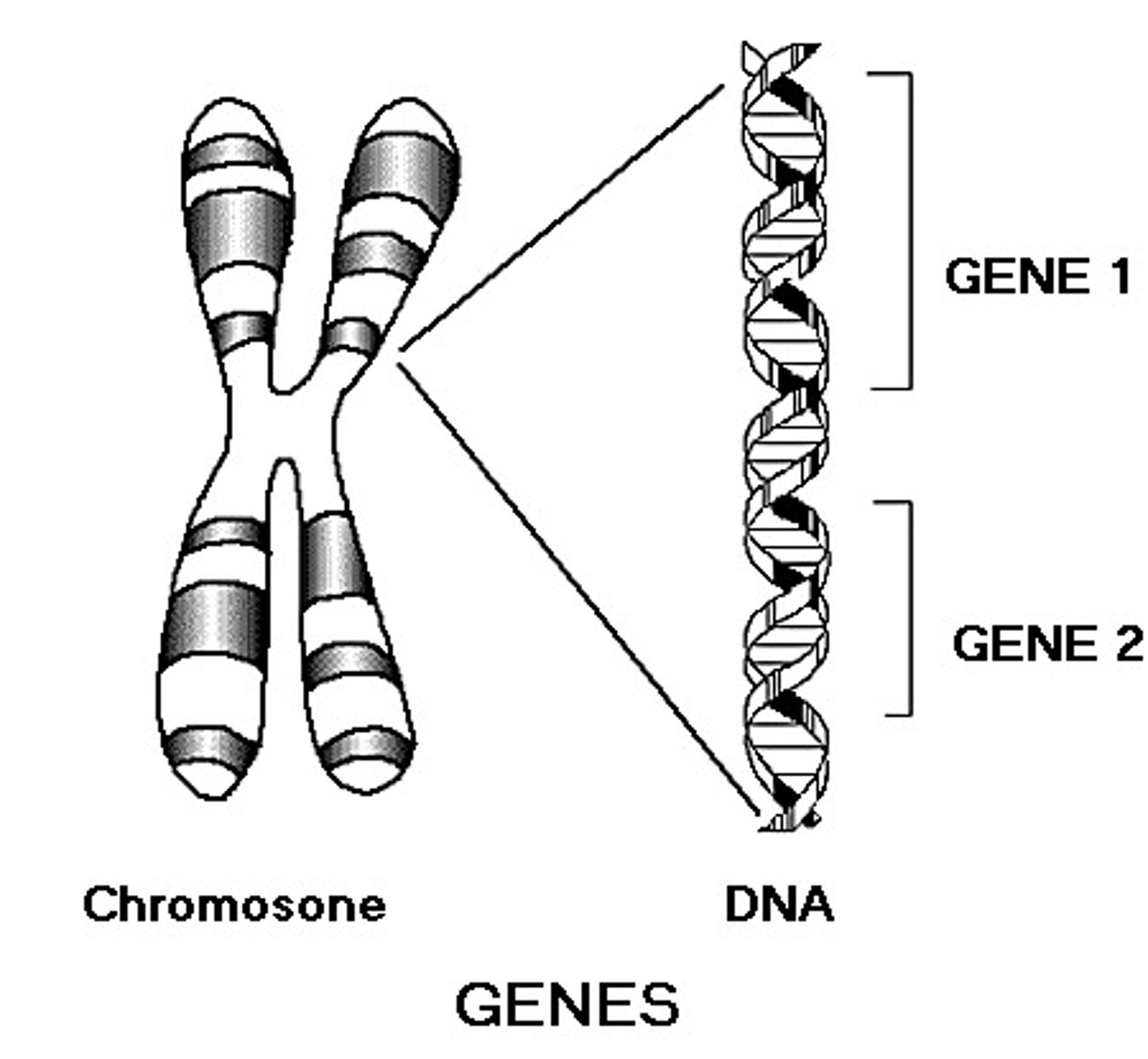
What was the Human Genome Project?
Sequencing and mapping of the entire human genome. (all of the nucleotide base pairs)
What can be discover my studying the genome?
Identifying genes linked to different disorders, allowing those at risk to make informed lifestyle decisions based on the known risk factors.
Investigating human evolutionary history, including how humans migrated in the past.
Improving our understanding of the causes of inherited disorders and how we should be treating them.
What is DNA made of?
DNA is a polymer made up of two long strands of small units that repeat throughout the structure, called nucleotides. Each of these is made up of a sugar, a phosphate and a base attached to the sugar.
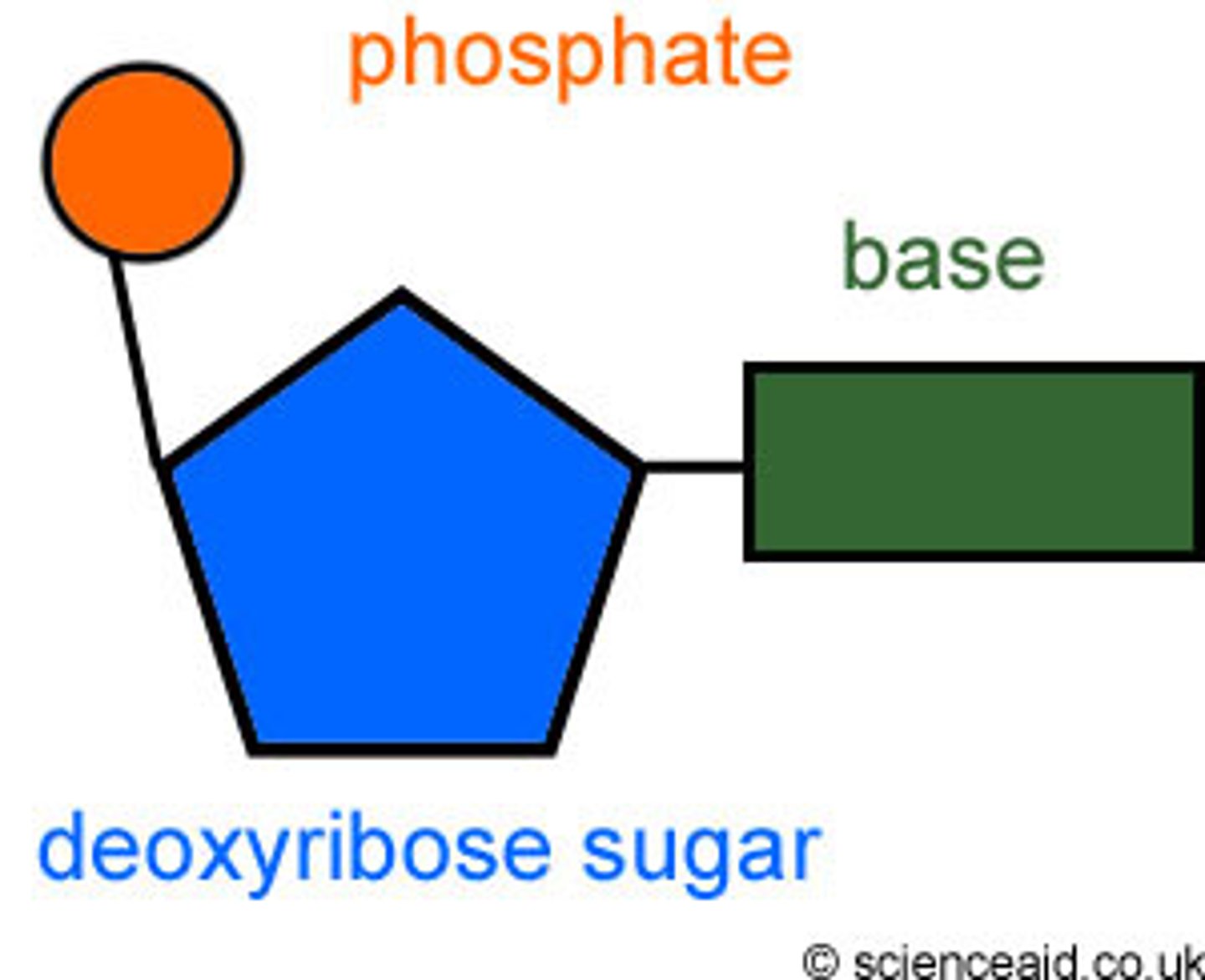
How do the two strands within each DNA molecule hold together?
By the attraction of opposite bases. Each base has one specific base with which it pairs e.g. T pairs with A, G pairs with C.
The sugar and phosphate of nucelotides form the long strands.
What is protein synthesis?
How our bodies make proteins
How does protein synthesis work?
Each amino acid is coded for by a specific sequence of three bases, called a codon. The order of the bases on the DNA impacts the order in which amino acids are combined to form proteins. Changing the sequence of bases can change the protein made by a gene.
How does protein synthesis happen?
A template is taken from the DNA and leaves the nucleus.
The template is used to guide protein synthesis on ribosomes located in the cytoplasm.
Specific amino acids are delivered by carrier molecules to the protein chain, where they are added in the order shown on the template.
What is a mutation?
A permanent change in the nucleotide sequence of DNA
Do mutations happen regularly?
Yes, mutations happen continuously and normally only slightly affect proteins or doesn't affect them at all
Do mutations tend to be bad or good?
The outcome of a mutation is almost always detrimental to the protein function, however, rarely a mutation may give a survival advantage. These rare scenarios represent the foundations of evolution by natural selection.
Example of a negatively impacting mutation
In enzymes, the substrate may no longer be able to bind to the active site. In structural proteins, their strength may be reduced.
Some regions of DNA do not encode protein sequences. The term given to these sections is non-coding DNA.
Survival advantage
Example of positively impacting mutation
Resistance to an antibiotic in bacteria
What is an allele?
Alleles are different forms of the same gene. Humans have pairs of every gene and in one gene, each half of the pair may have different alleles. People's characteristics are determined by the alleles that they have. Alleles can either be dominant or recessive
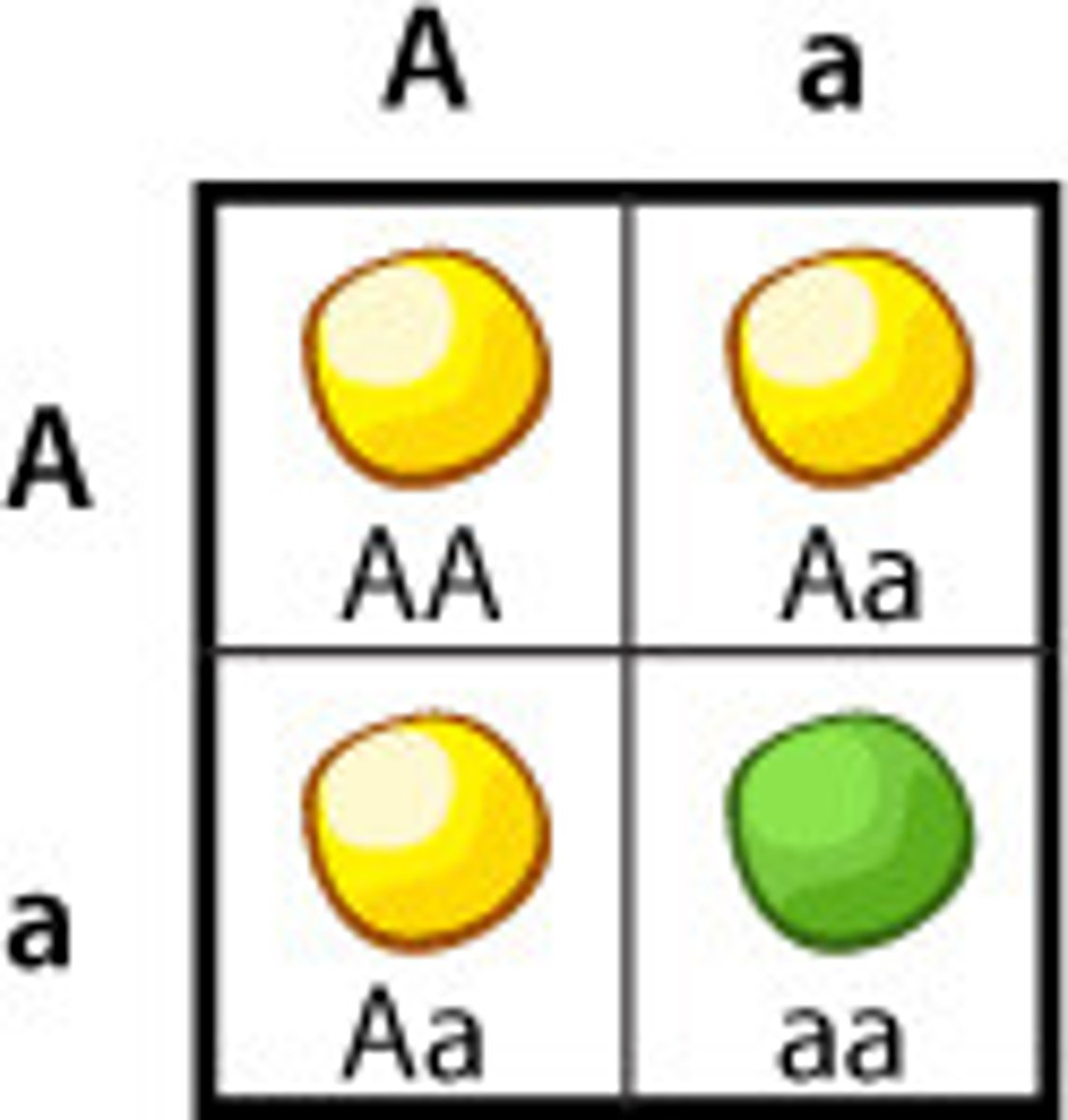
What is a dominant allele?
A dominant allele is always expressed regardless of identity of the other allele.
It only needs one copy present to be expressed (BB, Bb) (it is represented by a capital letter)
If B is the allele for brown eyes when a person has a copy of the B allele, they will have brown eyes, no matter what other allele is present.
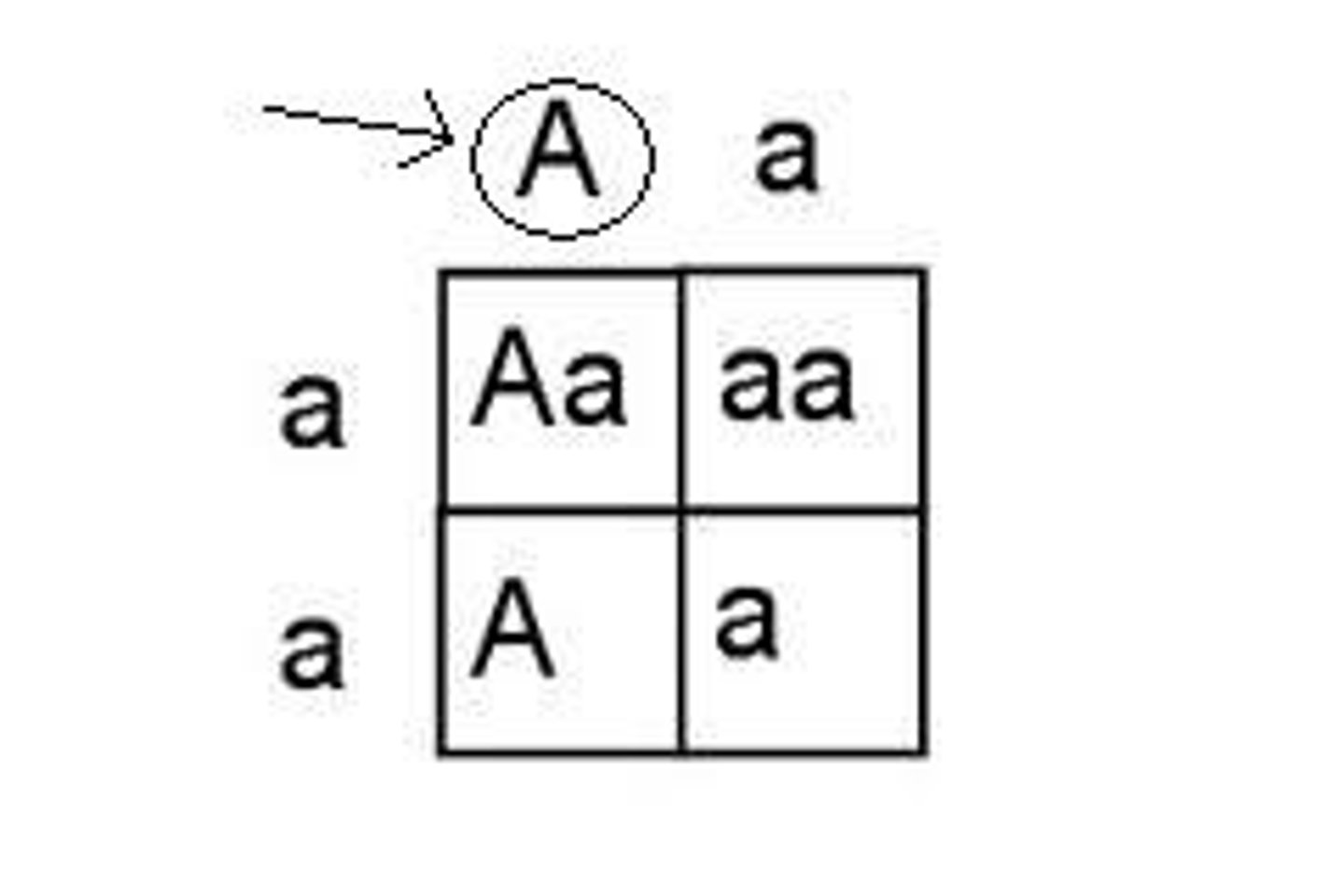
What is a recessive allele?
A recessive allele is only expressed if the other allele is also recessive (bb) (it is represented by a lowercase letter).
A person can only have blue eyes if both their alleles are b.
What does genotype mean?
Genotype refers to the combination of alleles an organism has.
What are the two genotypes?
Heterozygous, homozygous
If the two alleles are different, we say that the person is heterozygous (Bb).
If the two alleles are the same, we say that the person is homozygous (BB or bb)
What is a phenotype?
A phenotype is an observed characteristic of an individual.
The phenotype is determined by the interaction between the genotype and environment.
Earlobes being attached or free is an example of a phenotype, where the alleles present will determine a characteristic, unless the environment interferes.
What is monohybrid inheritance?
Inheritance of a characteristic controlled by a single gene. It can be visualised with a punnets square.
What is a punnets square?
A grid system for predicting all possible genotypes resulting from a cross
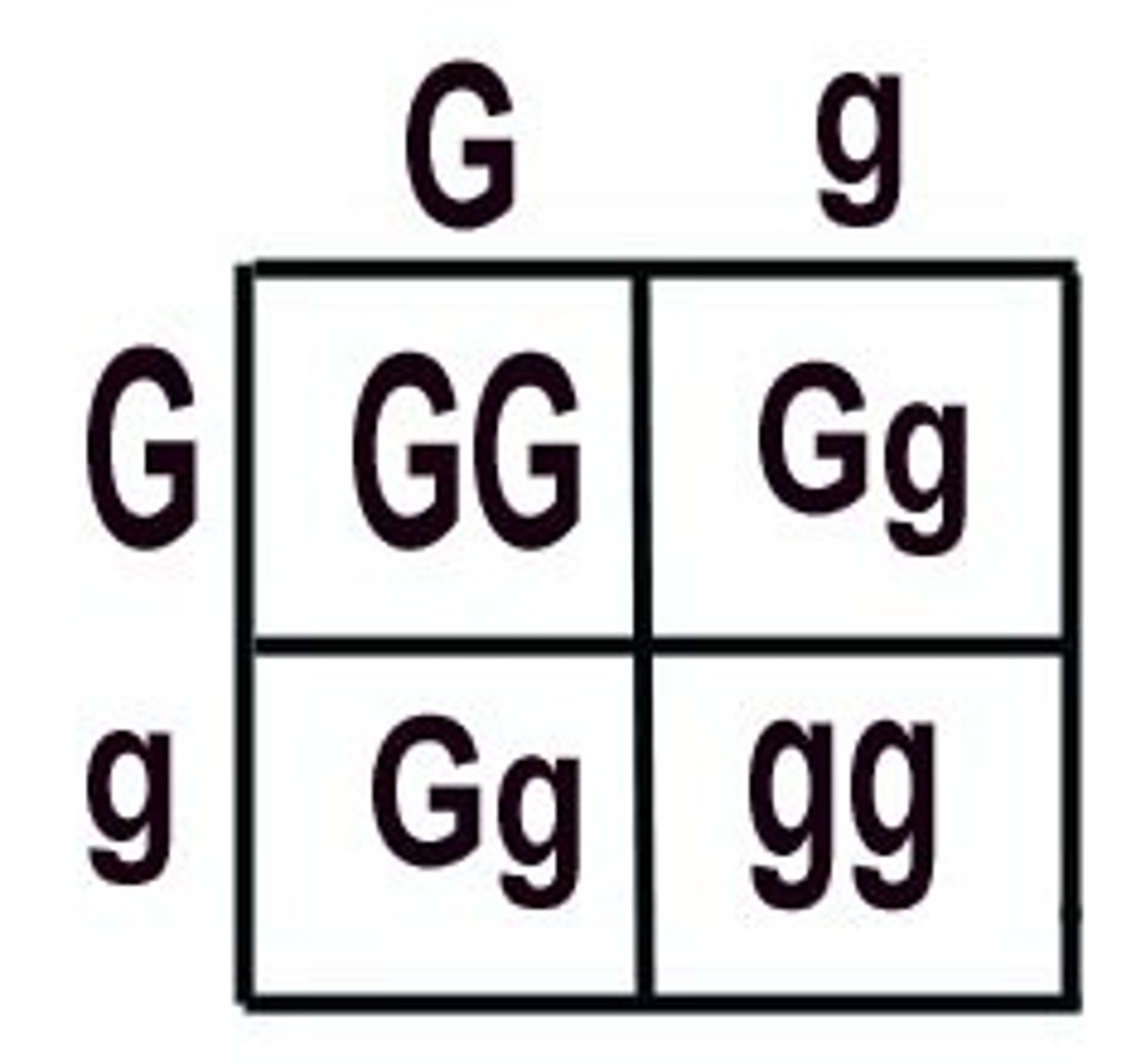
Example of a disorder caused by a recessive allele
Cystic fibrosis
What is cystic fibrosis?
A disorder of cell membranes which causes thick, sticky mucus to build up in the lungs and digestive system.
Example of a disorder caused by a dominant allele
Polydactyly
What is polydactyly?
A disorder where the sufferer has extra fingers or toes
What is genome screening?
Screening a persons genome to look for genes that may be susceptible to genetic disorders.
Example of genome screening?
Embryonic screening
Advantages of embryonic screening
During IVF, most embryos are in surplus anyway so screening ensures that the implanted embryos are healthy.
A reduction in disorders that need to be treated would save a significant amount of money in the long term.
It prevents people from suffering from genetic disorders.
Disadvantages of embryonic screening
Its expensive in the short term
It could cause a surge in 'designer babies'
There is the potential that defining the desirability of an embryo based on their genetic make-up could promote discrimination.
The embryos that are not used are destroyed. This can be considered unethical or against religious views.
What determines sex?
Healthy human body cells contain 23 pairs of chromosomes, only one of which is responsible for determining biological sex. This pair of chromosomes are called the sex chromosomes and can either be X or Y
Women have XX chromosomes
Men have XY chromosomes
What is variation?
Within a population, variation describes differences in the characteristics of individuals. Variation may be a result of differences in genetics and/or the environment.
What is evolution?
A gradual change in inherited characteristics of biological populations over time.
What is speciation?
Formation of new species
Who developed the theory of speciation?
Alfred Russel Wallace
How does speciation happen?
Speciation happens when the average phenotype (observed characteristics) of two populations have diverged (changed) so much that the two population can no longer breed to produce fertile offspring, two different species have been formed.
Natural mutations can create new alleles and two populations can begin to diverge.
In what situation does speciation happen?
Two populations of the same species become geographically isolated (separated).
The populations exhibit (show) genetic variation.
Due to differing environments and selection pressures, natural selection (survival of the fittest) operates differently on the populations.
This eventually leads to genetic divergence until the populations are unable to interbreed to produce fertile offspring.
At this point, they have become two different species.
What is selective breeding?
Also known as artificial selection, it happens when humans choose animals and crops to breed, based on their genetic characteristics. Humans have done this in farming for thousands of years.
Examples of things that can be selectively bred
Flowers for aesthetic, such as size and colour.
In farming, animals that produce more milk or meat.
Disease resistant crops.
Gentle-natured domestic dogs that can co-exist with humans.
What are the negatives to selective breeding?
Inbreeding, this causes some breeds to become particularly susceptible to disease or inherited defects e.g. a french bulldogs flat face can cause breathing problems.
It can reduce variation in a population, making it harder for a species to adapt to environmental change.
What is genetic engineering?
It involves modifying an organisms genome by introducing a gene from another organisms to produce a desired characteristic.
Examples of genetic engineering
The gene that produces insulin can be inserted into bacteria. Those bacteria can then mass-produce insulin to treat people with diabetes.
A lot of communities that were lacking in vitamin A (which leads to blindness) were found to use rice as the core of their diet. A gene that produces vitamin A was taken from bacteria and added to rice, producing rice (golden rice) that was rich in vitamin A.
How does genetic engineering work?
1) Enzymes are used to cut a desired gene out of chromosome
2) The same enzyme is used to cut a vector. The vector is usually a bacterial plasmid (loop of DNA) or virus.
3) The vector is used to insert the gene into required cells
4) If the gene is delivered into cells before they have differentiated (at the egg or embryo stage), all cells in the developed organism will have the gene and show the characteristic.
Advantages of genetic engineering
Prevent inherited disease
Improving food production efficiency
Advantages of genetically modified crops
Gm crops usually show increased yields.
They can help provide the nutrients that are often missing from the diets of those living in developing nations.
GM crops are popular in some parts of the world and no complications have been experienced so far.
Disadvantages to genetic engineering
Because it is relatively recent, long-term effects are still uncertain.
Disadvantages to GM crops
Some people expect GM crops to negatively impact wild flower and insect populations, reducing biodiversity.
Some people expect there will be long-term effects of consumption on human health.
If transplanted genes managed to escape into the natural environment, we could accidentally create a 'superweed' that is resistant to herbicides.
What are clones?
Genetically identical individuals (copies)
How are clones made?
Through asexual reproduction, they can also be made artificially.
How are plants clones?
Using cuttings or tissue culture
How does plant cuttings work?
Good parent plants are used by gardeners as a source of cuttings.
To take a cutting, a branch is cut off from the parent plant. Hormones are then used to encourage the roots to grow and the cutting is then planted.
Planting cuttings produce clones of the parent plant.
This allows a large number of plants with favourable characteristics to be produced quickly and cheaply.
How does tissue culture work?
Small groups of cells are extracted (taken) from a plant and placed in a growth medium (such as a petri dish with plant food in).
Division of these cells will eventually result in the formation of a clone of the parent plant.
The advantages of this technique are that it is quick, space-efficient and time-independent.
This technique is important for commercial use in nurseries and the preservation of rare species.
How are animals cloned?
Using embryo transplants and adult cell cloning
How does adult cell cloning work?
Take an unfertilised egg cell and remove the nucleus.
The egg cell is then injected with the nucleus from an adult body cell, belonging to the animal which is to be cloned.
An electric shock is given to the egg cell to stimulate it to divide.
Once the embryo has grown into a larger ball of cells, it is implanted into a surrogate mother.
The embryo (a clone of the original adult body cell) will continue to develop in the womb of the surrogate.
How does embryo transplant work?
Developing embryos can be split into smaller groups of cells before differentiation (cell specialisation) to give many smaller and identical embryos, which can then be put into host mothers.
A classic example would be a farmer fertilising egg cells produced by his best cow with sperm taken from his prize bull. The farmer would then split the resulting embryo and implant the clones into the uteruses/wombs of other cows.
What is Charles Darwin's theory of natural selection?
It proposed that all species have evolved from simple life forms that first appeared on earth more than three billion years ago.
How does natural selection work?
Different individual animals in a population have different combination of genes.
Individuals that are best adapted for the environment will have a greater chance of survival.
These individuals are more likely to breed successfully.
The characteristic responsible for the greater chance of survival are more likely to be passed on to the next generation.
Examples of mutations that give a survival advantage
Camouflaged animals
Faster animals
Alaskan wood frogs can freeze 60% of their bodies to survive the freezing cold temperatures of Canada.
Komodo dragons have dirty mouths so that any prey they bite become infected and more likely to die. This access to food gives a survival advantage.
Why was these some opposition to Darwin's theory at the time?
At the time genes had not been discovered and Darwin was unable to suggest a method for the passing of characteristics between generations.
There were scientists that regarded the evidence presented by Darwin as inconclusive.
Natural selection challenged the common belief that God created the natural world.
Example of another theory of evolution
Lamrack's theory of inheritance of an acquired characteristic.
What is Lamrack's theory of inheritance of an acquired characteristic?
In giraffes he argued:
Earlier giraffes had shorter necks so would have to stretch for their food.
Continual stretching resulted in the elongation of a giraffes neck within its lifetime.
The newly acquired characteristic (long neck) would then be passed onto the next generation.
Is Lamrack's theory true of false?
His theory has been proven FALSE, changes that happen in an animals lifetime are NOT passed down onto future generations.
What evidence supports the theory of evolution?
The discovery of genes
Antibiotic resistant bacteria
Fossils
What are the three ways fossils are formed?
Where decomposers cannot act, preservation is possible. Decomposers cannot operate in glaciers (extreme, low temperatures) and peat bogs (extreme acidity).
Hard parts of organisms are gradually replaced by minerals as they decay slowly, creating a rock-like substance. When the surrounding sediment turns to rock, the teeth-shaped mineral structure remains distinct (different).
The hardening of soft materials can produce casts or impressions, such as footprints. For example, clay hardens around an organism that is buried within it. This organism then decays, leaving behind a cast of itself.
How can we reduce the creation of antibiotic bacteria?
Doctors should avoid prescribing antibiotics unnecessarily, for example for treating non-serious or viral infections.
Patients must finish a course of antibiotics to make sure that all of the bacteria are killed.
The use of antibiotics in agriculture (for example, cattle feed), should be restricted.
What can cause extinction?
Biotic and abiotic factors
What is a biotic factor?
Relating to an organism; a new predator, disease
What is an abiotic factor?
A physical factor/nonliving; A volcanic eruption, a meteor, change in atmosphere
What are the two ways you can classify organisms?
The traditional classification system devised by Carl Linnaeus.
The three domain system proposed by Carl Woese
What is the traditional classification system?
It categorises based on their structure and characteristics. There are seven groups in order of size: Kingdom, Phylum, Class, Order, Family, Genus, Species.
You can remember this as; King Prawn Curry Or Fried Greasy Sausage
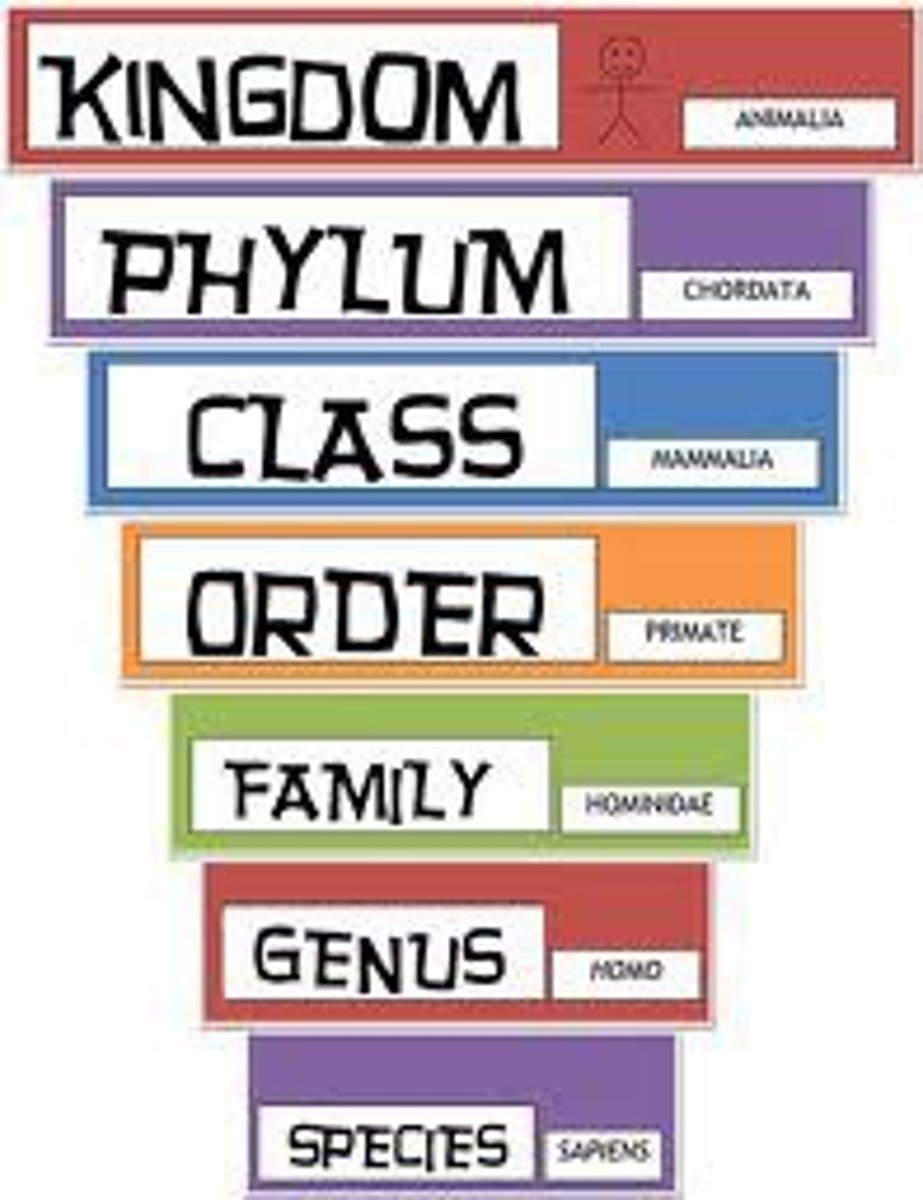
What is bionomial nomenclature?
Two part naming system (genus and species)
What is the three domain system?
This classifies organisms based on chemical analysis.
The 3 domains are: Archaea - primitive bacteria. Bacteria - true bacteria. Eukaryota - organisms possessing complex sub-cellular structures (protists, fungi, plants and animals).
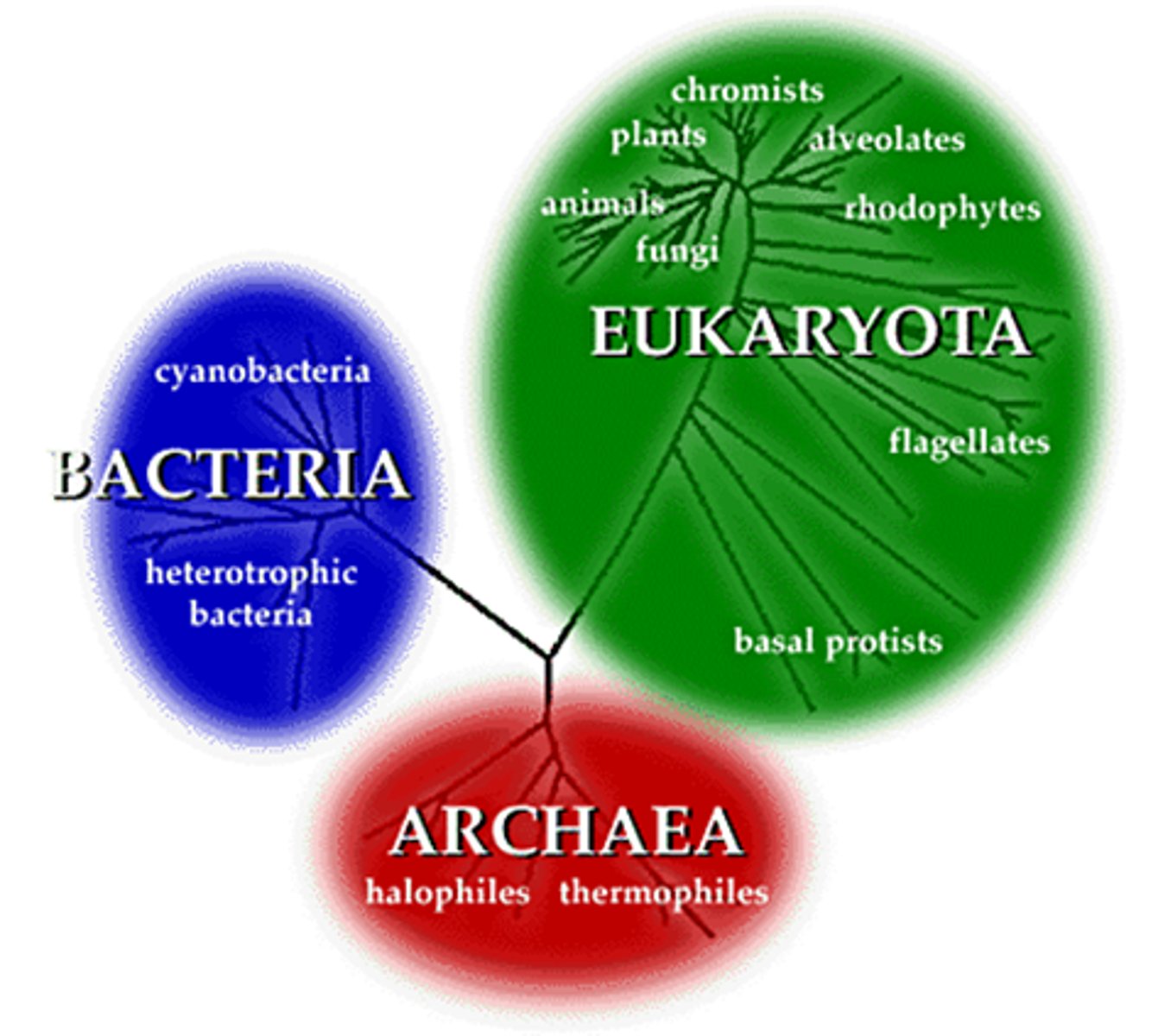
What is an evolutionary tree?
They used to show scientists how they believed organisms are related. The start of the tree is a common ancestor and the branches show the species that have evolved from the common ancestor.